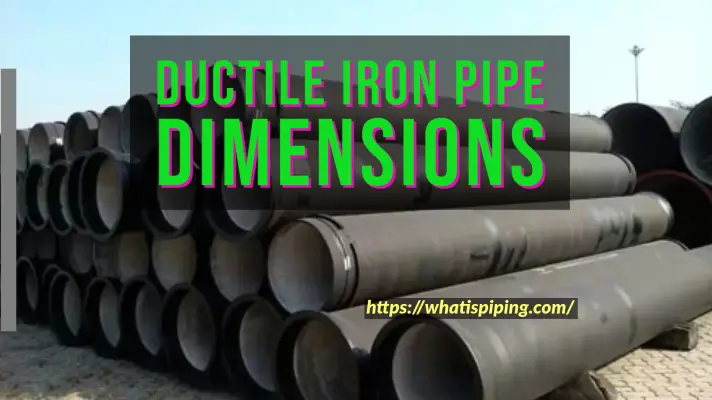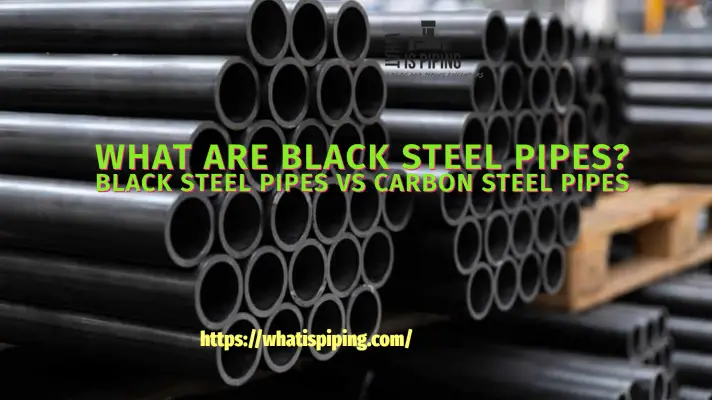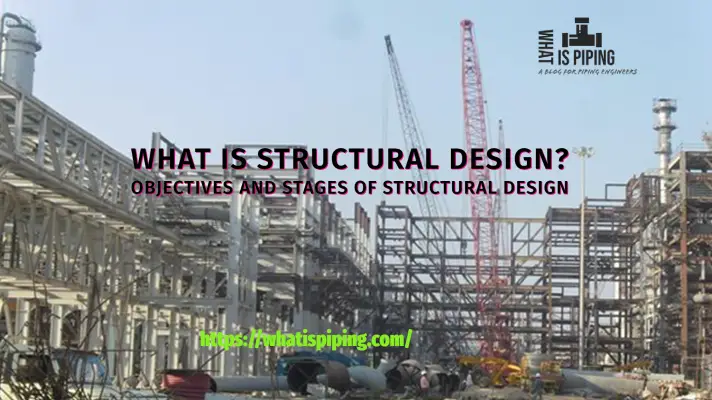In the world of structural and mechanical engineering, choosing the right materials is crucial for ensuring durability, reliability, and safety. One widely recognized and extensively used material in the construction industry is ASTM A53. In this blog article, we will delve into the characteristics, strengths, and applications of ASTM A53, shedding light on why it is a popular choice for a wide range of projects.
What is ASTM A53?
ASTM A53 is a specification developed by the American Society for Testing and Materials (ASTM). It sets the standard for seamless and welded steel pipes used in various applications. The specification covers different grades, types, and dimensions of pipes, catering to diverse industrial requirements. This specification covers seamless and welded black and hot-dipped galvanized steel pipes of size NPS 1⁄8 to NPS 26 (DN 6 to DN 650).
Types and Applications of ASTM A53
ASTM A53 pipes are mainly used in low-critical applications like plumbing systems, water supply systems, fire sprinkler systems, HVAC systems, etc. They are also found to be widely used in structural applications.
ASTM A53 covers three types of pipes as listed below:
- Type F—Furnace-butt-welded, continuous welded Grade A,
- Type E—Electric-resistance-welded, Grades A and B, and
- Type S—Seamless, Grades A and B.
Seamless A53 Pipes:
ASTM A53 Type S seamless pipes are available in two grades; Grade A and Grade B. Type S ASTM A53 pipes are produced by the extrusion method.
Welded A53 Pipes:
As mentioned above there are two types of welded A53 pipes; Type E and Type F. Type E has two grades-Grade A and Grade B; while Type F has only Grade A.
Type E A53 pipes are Electric resistance welded (ERW) pipes designed for general mechanical and structural applications. Type F A53 pipes are Furnace-welded pipes commonly used in non-pressure plumbing applications, such as drain, waste, and vent systems.
The steel for both seamless and welded pipes is made by one or more of the following processes: open-hearth, electric furnace, or basic oxygen.
Chemical Composition of ASTM A53/A53M Materials
The chemical composition of ASTM A53 material is provided in Table 1.
| Type | Grade | Carbon | Manganese | Phosphorus | Sulfur | Copper | Nickel | Chromium | Molybdenum | Vanadium |
|---|---|---|---|---|---|---|---|---|---|---|
| Type S (seamless pipe) | Grade A | 0.25 | 0.95 | 0.05 | 0.045 | 0.40 | 0.40 | 0.40 | 0.15 | 0.08 |
| Type S (seamless pipe) | Grade B | 0.30 | 1.20 | 0.05 | 0.045 | 0.40 | 0.40 | 0.40 | 0.15 | 0.08 |
| Type E (electric-resistance-welded) | Grade A | 0.25 | 0.95 | 0.05 | 0.045 | 0.40 | 0.40 | 0.40 | 0.15 | 0.08 |
| Type E (electric-resistance-welded) | Grade B | 0.30 | 1.20 | 0.05 | 0.045 | 0.40 | 0.40 | 0.40 | 0.15 | 0.08 |
| Type F (furnace-welded pipe) | Grade A | 0.30 | 1.20 | 0.05 | 0.045 | 0.40 | 0.40 | 0.40 | 0.15 | 0.08 |
Advantages of ASTM A53 Pipes
Strength and Durability:
ASTM A53 pipes are manufactured from carbon steel, which imparts excellent strength (Tensile Strength for Grade A: 330 MPa, for Grade B: 415 MPa) and durability. Carbon steel exhibits high tensile strength, making it suitable for applications that require resistance to high pressure and mechanical stress.
Versatility:
ASTM A53 pipes are available in various types and grades. These grades differ in terms of chemical composition and mechanical properties, allowing engineers to select the most suitable grade based on specific project requirements.
Corrosion Resistance:
ASTM A53 pipes can be galvanized to enhance their corrosion resistance. Galvanization involves coating the pipes with a layer of zinc, providing an additional protective barrier against rust and corrosion, particularly in outdoor or high-moisture environments.
Cost-Effective:
ASTM A53 pipes offer an excellent balance between performance and cost. The availability of different grades and sizes ensures that there is a suitable option for a wide range of budgetary constraints without compromising on quality.
Compliance and Quality Control:
ASTM A53 is a widely recognized and respected standard in the steel industry. To ensure compliance and quality control, manufacturers adhere to strict guidelines and conduct various tests, including dimensional inspection, visual examination, hydrostatic testing, and non-destructive testing.
ASTM A53 Pipe Specification
Specifying ASTM A53 pipes involves providing detailed information about the specific requirements for the pipes you need. This includes specifying the type, grade, size, length, quantity, and any additional requirements or tests. Below are the key steps to properly specify ASTM A53 pipes:
Type and Grade:
Determine the type of pipe required based on the intended application:
- Type S: Seamless pipe, suitable for high-temperature and pressure applications.
- Type E: Electric-resistance-welded (ERW) pipe, suitable for general mechanical and structural applications.
- Type F: Furnace-welded pipe, commonly used in non-pressure plumbing applications.
Select the appropriate grade (A or B) based on the mechanical and chemical properties required for your application. Refer to the provided chemical compositions to make an informed decision.
Size:
Specify the nominal pipe size (NPS) which represents the approximate inside diameter of the pipe. This is typically expressed in inches. For example, NPS 2 refers to a pipe with an approximate inside diameter of 2 inches.
Length:
Specify the required length of the pipes. They are available in standard lengths or custom lengths based on requirements.
Quantity:
Indicate the total quantity of pipes needed for your project.
Coating or Finish:
Specify if any special coating or finish is required. For example, you may need galvanized pipes to enhance corrosion resistance.
End Finish:
Specify the type of end finish required, such as plain ends, threaded ends, or beveled ends. Threaded ends are commonly used for connecting pipes, while beveled ends are beneficial for welding purposes.
Testing and Inspection:
Outline any specific testing or inspection requirements. ASTM A53 pipes undergo various tests, including hydrostatic testing, non-destructive testing, and visual inspection. You can request additional tests to ensure compliance with specific project standards.
Standards and Certifications:
Clearly state the ASTM A53 specification and edition to which the pipes must conform. Additionally, specify any other relevant standards or certifications that the pipes must meet.
Special Requirements:
If there are any special requirements or modifications needed for the pipes, such as specific tolerances, marking, or packaging, make sure to include them in the specification.
Example Specification:
Here’s an example of how you could specify ASTM A53 pipes:
- Type: Type S (Seamless)
- Grade: Grade B
- Size: NPS 4 (4 inches inside diameter)
- Length: 21 feet
- Quantity: 500 pipes
- Coating: Galvanized
- End Finish: Threaded ends
- Testing: Hydrostatic testing, non-destructive testing
- Standards: ASTM A53 latest edition
Always communicate your specifications clearly with the pipe supplier or manufacturer to ensure you receive the correct pipes that meet your project requirements.
ASTM A53 Sch 40 Pipe Dimensions
The pipe dimensions for ASTM A53 Sch 40 pipes are given in Table 2 below:
| ASTM A53 Grades A and B Pipe Schedule 40 Dimensions | ||||||
|---|---|---|---|---|---|---|
| NPS Designator | DN Designator | Outside Diameter | Inside Diameter | Wall Thickness | Nominal Weight (Mass) per unit Length | |
| (mm) | (mm) | (mm) | Plain End (kg/m) | Threads & Couplings (kg/m | ||
| 1/8″ | 6 | 10.3 | 6.8 | 1.73 | 0.37 | 0.37 |
| 1/4″ | 8 | 13.7 | 9.2 | 2.24 | 0.63 | 0.63 |
| 3/8″ | 10 | 17.1 | 12.5 | 2.31 | 0.84 | 0.84 |
| 1/2″ | 15 | 21.3 | 15.8 | 2.77 | 1.27 | 1.27 |
| 3/4″ | 20 | 26.7 | 20.9 | 2.87 | 1.69 | 1.69 |
| 1″ | 25 | 33.4 | 26.6 | 3.38 | 2.5 | 2.5 |
| 1-1/4″ | 32 | 42.2 | 35.1 | 3.56 | 3.39 | 3.4 |
| 1-1/2″ | 40 | 48.3 | 40.9 | 3.68 | 4.05 | 4.04 |
| 2″ | 50 | 60.3 | 52.5 | 3.91 | 5.44 | 5.46 |
| 2-1/2″ | 65 | 73 | 62.7 | 5.16 | 8.63 | 8.67 |
| 3″ | 80 | 88.9 | 77.9 | 5.49 | 11.29 | 11.35 |
| 3-1/2″ | 90 | 101.6 | 90.1 | 5.74 | 13.57 | 13.71 |
| 4″ | 100 | 114.3 | 102.3 | 6.02 | 16.07 | 16.23 |
| 5″ | 125 | 141.3 | 158.2 | 6.55 | 21.77 | 22.07 |
| 6″ | 150 | 168.3 | 154.1 | 7.11 | 28.26 | 28.58 |
| 8″ | 200 | 219.1 | 202.7 | 8.18 | 42.55 | 43.73 |
| 10″ | 250 | 273 | 254.5 | 9.27 | 60.29 | 63.36 |
| 12″ | 300 | 323.8 | 304.8 | 9.52 | 73.78 | 76.21 |
ASTM A53 vs ASTM A106: Differences
Below is a tabular format highlighting the major differences between ASTM A53 and ASTM A106 pipes:
| Aspect | ASTM A53 | ASTM A106 |
|---|---|---|
| Scope | Covers seamless and welded black and hot-dipped galvanized steel pipes | Covers seamless carbon steel pipes for high-temperature service |
| Grades | Grade A, Grade B | Grade A, Grade B, Grade C |
| Chemical Composition | Limited to carbon (max 0.30% for Grade B) | Carbon and alloy elements allowed (no specific limits) |
| Manufacturing Process | Seamless and welded | Seamless only |
| Applications | Plumbing, HVAC, low-pressure steam, water, gas lines | Power plants, refineries, boilers, heat exchangers |
| Surface Finish | Can be hot-dipped galvanized | Typically not galvanized |
| Tolerances | Wall thickness and outside diameter tolerances are less strict | Wall thickness and outside diameter tolerances are stricter |
Conclusion
ASTM A53 stands as a testament to the reliability and versatility of carbon steel pipes. Its robustness, corrosion resistance, and cost-effectiveness make it a popular choice for numerous applications, ranging from industrial processes to plumbing systems. By adhering to the specifications outlined in ASTM A53, engineers and manufacturers can achieve optimal performance and safety in their projects.








